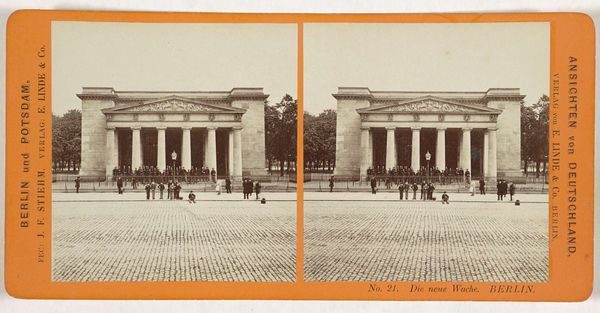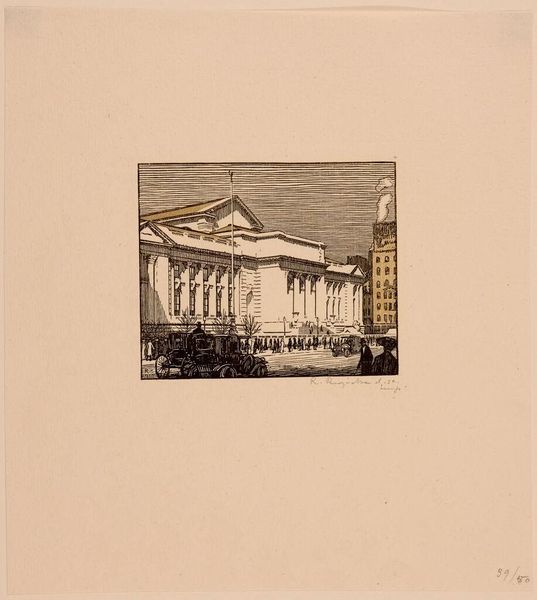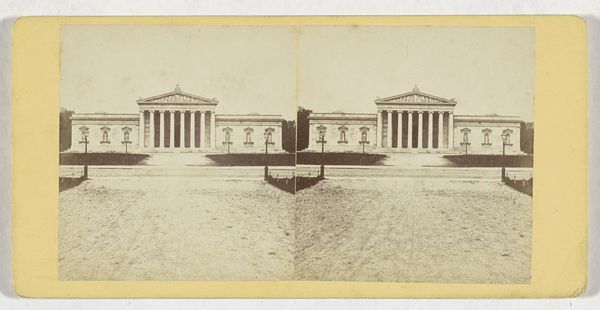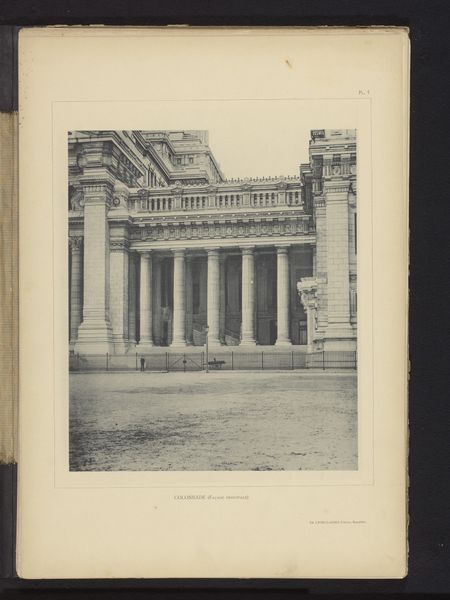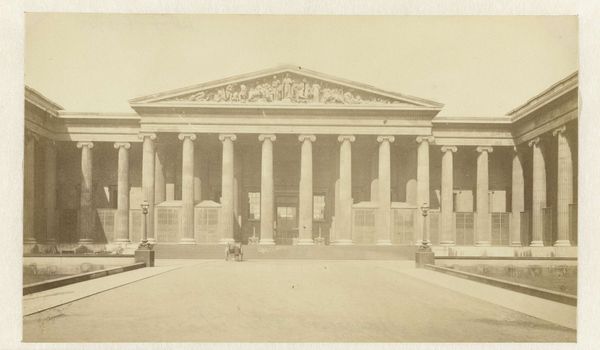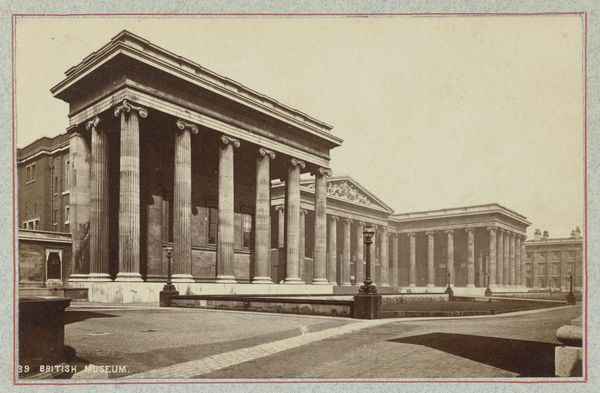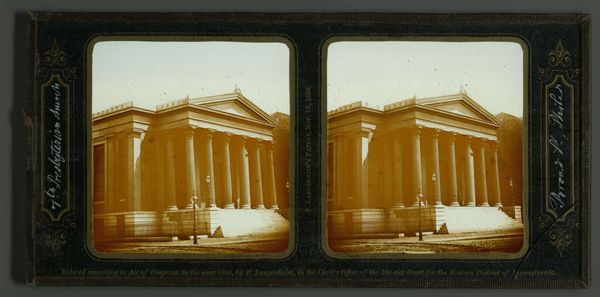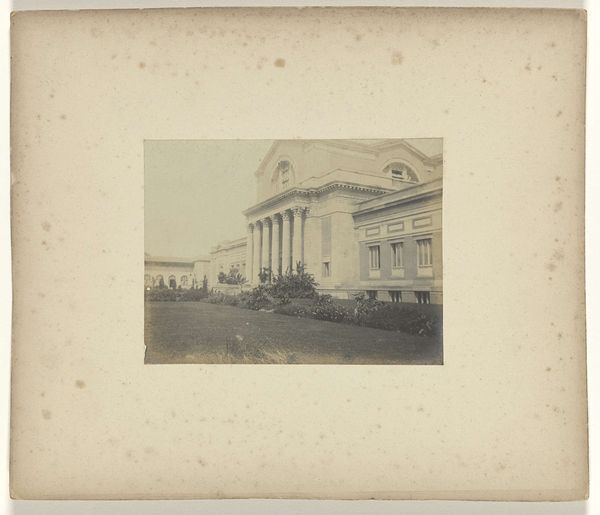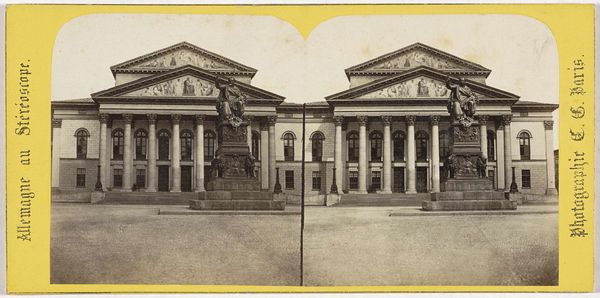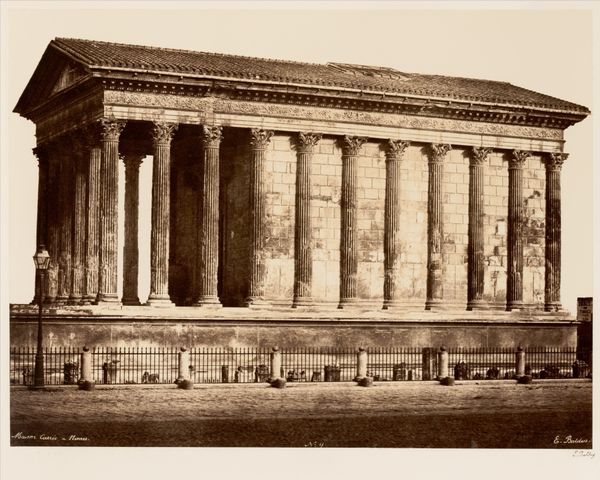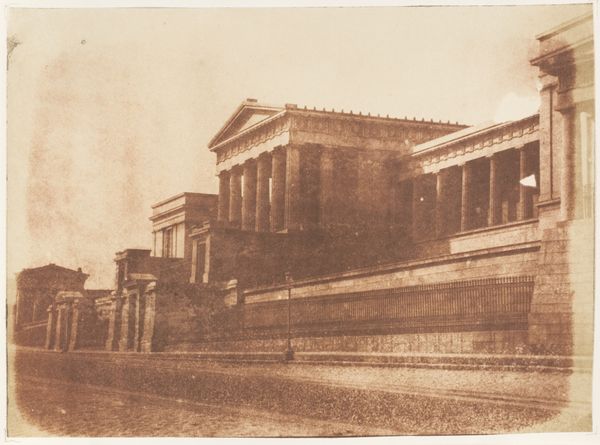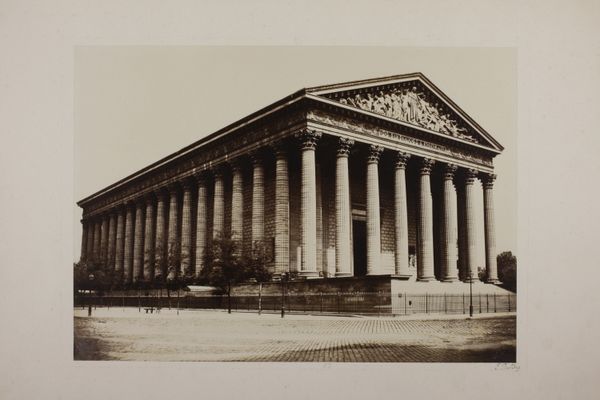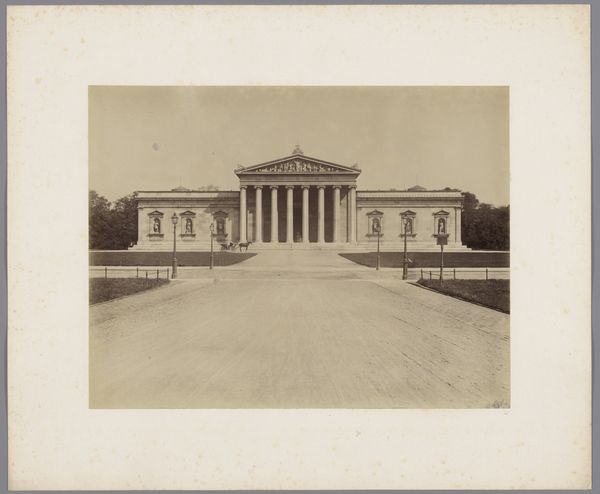
Dimensions: height 110 mm, width 161 mm
Copyright: Rijks Museum: Open Domain
Curator: Editor: So, we’re looking at "Alexandertheater in Sint Petersburg," a gelatin-silver print by Alfred Lorens, made sometime between 1850 and 1876. It has this wonderfully crisp quality despite its age, but what strikes me most is the contrast between the solid architectural forms and the seeming emptiness of the public space in front. What's your perspective on it? Curator: It is interesting to consider this photograph through its material properties. The gelatin-silver print process itself signals a particular moment in technological development, changing how photography and other mediums engage. The scale here is very interesting, this monumental building diminished, seemingly documenting emptiness but doing much more in revealing what the process makes possible. It has its own means of production with class dynamics that must also be included within its analysis. Think of the labor that went into not only constructing the Alexandertheater but producing these gelatin-silver prints, its method becoming more advanced each day with advancements during that period being quite striking when comparing photographs pre- and post- its use! Editor: That’s a fascinating point—connecting the physicality of the print to the broader socio-economic context. Were these prints widely circulated, making art accessible, or were they mainly for the elite? Curator: I think that’s precisely the tension the photograph embodies. Neoclassicism and grand cityscapes were associated with imperial power, this kind of staged urban setting presented for elites, while its reproduction as a gelatin-silver print, allows this grandiosity to circulate more broadly via different commercial modes of photographic printing. It complicates the boundary between high art and popular consumption. Editor: I see, so it both reinforces and challenges class structures simultaneously, thanks to the evolving means of photographic production. Fascinating. Curator: Absolutely, paying attention to those contradictions inherent in the photograph's materiality can really open up a richer understanding of its historical and social meaning. Editor: I never thought about photography in this way, I learned so much and my views have changed for the better on photography from this era! Thank you! Curator: No problem, let us investigate the rest of these fascinating artifacts within our collection now that you have more advanced ways of critically thinking.
Comments
No comments
Be the first to comment and join the conversation on the ultimate creative platform.
